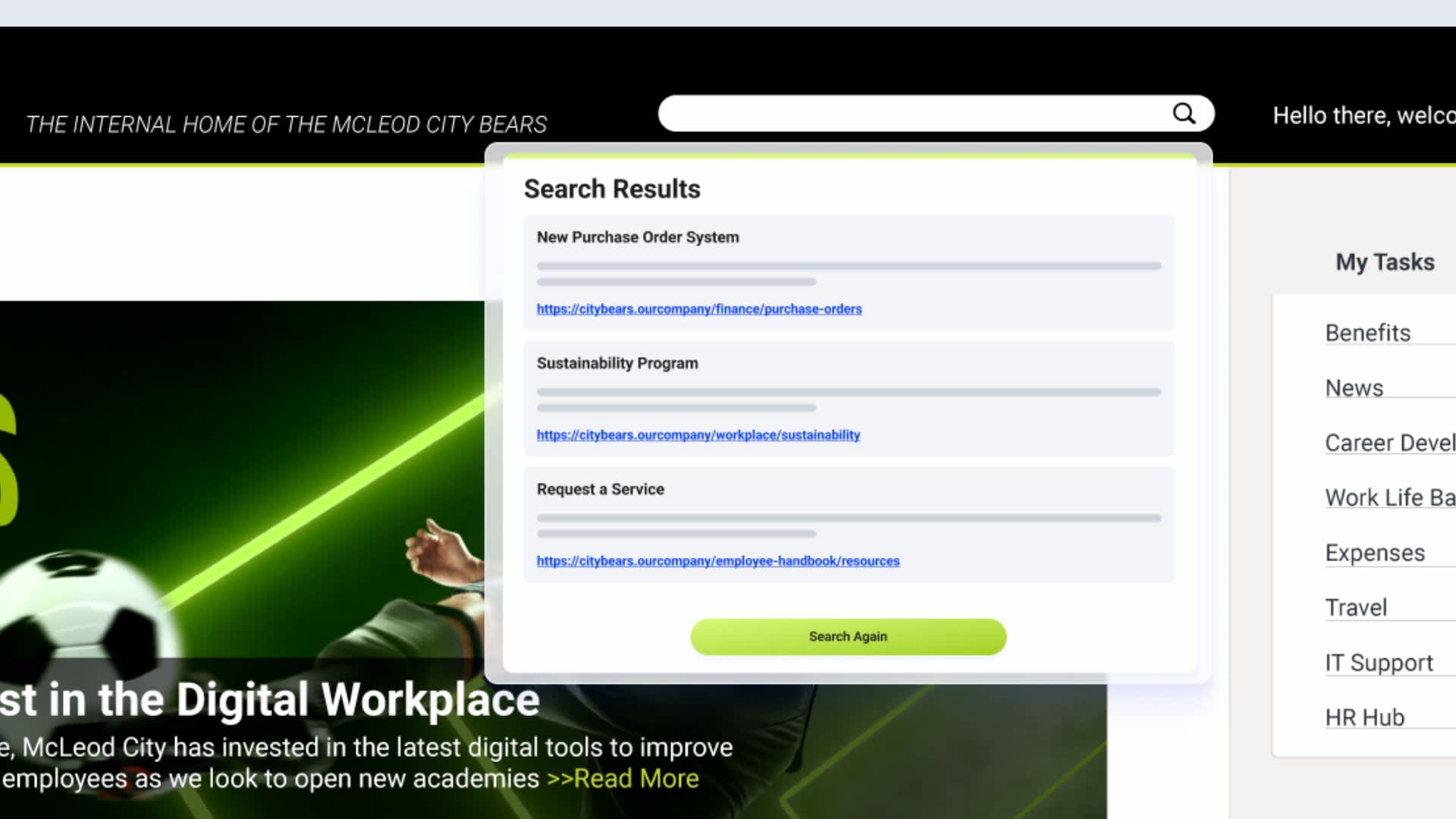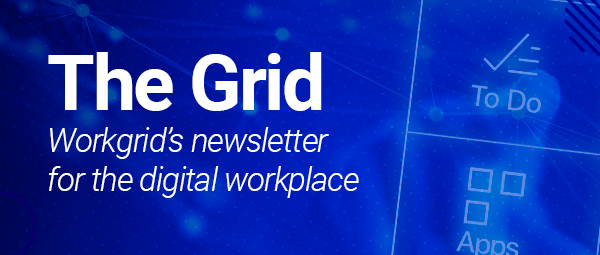The Evolution From Classic Enterprise Search to AI Insights and Discovery
There’s a high likelihood that as you read this, you are currently seated at your desk or perhaps browsing on your phone. It is also probable that, similar to approximately 80% of knowledge workers, you find yourself overwhelmed by the sheer volume of emails, documents, reports, and files. It often feels like you are constantly struggling to stay afloat amidst this flood of data. If this resonates with you, rest assured that you are not alone. Information overload is a genuine issue that continues to worsen as businesses generate an increasing amount of data each day.
For years organizations have relied on classic enterprise search software to navigate the vast ocean of information and access knowledge. Yet, it's a weakly constructed lifeline when employees attempt to find information across their digital workplaces. It becomes an undesirable necessary evil. But as technology advances, so do the tools at our disposal. Enter the new era of AI Insights and Discovery—a game-changing evolution that harnesses the power of artificial intelligence (AI) to make information retrieval not just faster but smarter.
In this article, we'll examine the differences between classic enterprise search and AI-powered insights and discovery in detail. We'll also show you why this new approach of blending into AI Assistants like Workgrid is becoming indispensable in today's workplaces, helping you not just survive the data deluge - but thrive.
Classic Enterprise Search Software: An Overview
Legacy enterprise search is both a practice and software deployment. It is designed to index and retrieve information from large datasets using keyword-based queries. This technology has been a cornerstone for businesses, enabling employees to easily search through documents, emails, databases, and more. The history of enterprise search is rooted in very traditional methods, which rely heavily on structured knowledge management approaches to make data accessible.
At its core, classic enterprise search relies on indexing documents and using keyword matching to find relevant information based on the user's input. Users can usually refine searches with Boolean operators like AND, OR, and NOT, allowing them to narrow down results effectively (yet this is often rarely practiced; it's estimated that only about 10-20% of general users actively use these advanced search techniques). In general, legacy enterprise search has been a crutch given lack of options and proper knowledge management strategies, so much so that studies suggest that enhancing the accuracy of search tools can improve decision-making efficiency by 20-25%.
The benefits of classic enterprise search software are clear. It offers efficiency in quickly retrieving key word laden information, vital for maintaining productivity in fast-paced work environments.
However, classic enterprise search falls down when put into practice. One major drawback is its limited contextual understanding, often struggling to comprehend the intent behind user queries, leading to irrelevant results.
![[asset] digital-assistant-stock-photo](https://images.ctfassets.net/z7p73u8c0thn/5dfmwWLmYbdDKCcMRIaV2m/308278d47704a135448f39c4a006ea4b/digital-assistant-stock-photo.jpg?w=1200&h=752&fl=progressive&q=60&fm=jpg&bg=transparent)
Employees spend, on average, at least two hours a day (25% of their work week) looking for the documents, information or people they need to do their jobs.” (Source: Human Resource Director)
Let's Imagine...
You're an employee at a large corporation and were just assigned to find status updates and recent relevant documents related to the "Transformation Project Optimal." You sit at your computer, open the enterprise search tool, and type "Optimal." Instantly, you're met with a deluge of results—everything from documents to every time someone has used ‘optimal’ in their document and binaries. There are various resources of unrelated projects with similar names, and you wade through a sea of links.
The next step might be to refine your search by adding more keywords: "2024 Transformation Project Optimal." This helps somewhat, but you're still sifting through numerous documents that only tangentially mention the project or are completely unrelated. The problem is clear: the search tool struggles to understand your query's specific context and intent.
![[asset] transformation-project-intranet-search](https://images.ctfassets.net/z7p73u8c0thn/7ymqL5KQFN2XBLsym28wQt/e8725b31c2d139d687abaf74cefae81a/transformation-project-intranet-search.png?w=1148&h=884&q=60&fm=png&bg=transparent)
This is the reality of classic enterprise search systems that rely heavily on keyword matching. They are good at indexing vast amounts of data and retrieving documents that contain very specific terms. Still, they lack the more profound understanding to discern the context behind the user's intent. This often leads to irrelevant results, forcing users to wade through unnecessary data and filter through copious results to find what they need.
Furthermore, standard enterprise search systems perform poorly when dealing with unstructured data like natural language text, documents, and application discovery. This limits their usefulness in more complex search scenarios. The classic user interface can also pose issues, as it often requires users to understand search operators and query structuring – which is often never used by employees.
AI Insights and Discovery: The Modern Approach
AI insights and discovery tools are often integrated with conversational AI assistants like Workgrid, representing a significant advancement in enterprise information discovery. These tools use a combination of natural language processing (NLP) and advanced AI knowledge chains to understand and respond to user queries more humanistically. Unlike traditional search methods, AI-powered systems can interpret the context and nuances of a user's natural language. This helps ensure outcomes that drive relevant results. This could be a document, asset, workflow, or information from other AI bots or applications.
One of the standout features of AI insights and discovery is NLP. This technology enables the AI Assistant to comprehend and process human language, allowing users to input queries in natural, conversational terms, rather than the standard few keywords hoping to reach the target. This is a seismic paradigm shift in the discovery experience which becomes conversational and enhances the user experience. It eliminates the need for complex search operators and makes the search process more intuitive.
Another critical feature is Retrieval-Augmented Generation (RAG), which combines retrieval-based and generation-based methods to provide comprehensive and contextually accurate answers. RAG leverages large language models and sophisticated retrieval techniques to generate responses that are not only relevant but also insightful, addressing the specific needs of the user.
AI insights and discovery also excel in providing contextual relevance and personalized results. By leveraging AI and ML, these tools can understand the context of queries and deliver more relevant and personalized search results. This level of sophistication ensures that users receive the information they need, tailored to their specific requirements, enhancing overall productivity and satisfaction.
The benefits of AI-powered insights and discovery tools are profound. They offer an enhanced user experience through conversational interfaces, making the search process more user-friendly and accessible. These tools also handle both structured and unstructured data effectively, ensuring that all types of information are easily retrievable. Moreover, through continuous learning, the system improves its understanding and performance over time, becoming more accurate and efficient with each interaction.
![[asset] transformation-project-assistant-example](https://images.ctfassets.net/z7p73u8c0thn/3J8ItB1EkziZi6kTGFIxXg/1d97f02c28b3c312659ef2a869047518/transformation-project.png?w=431&h=414&q=60&fm=png&bg=transparent)
Despite these advantages, there are challenges and considerations when implementing AI insights and discovery tools. The complexity in setting up and integrating these systems can be significant, requiring substantial resources and expertise. Additionally, ensuring data privacy and security is a critical concern, as these tools often handle sensitive information. Ongoing maintenance is also necessary, as continuous updates and training are required to keep the system performing optimally.
Comparative Analysis
When comparing classic enterprise search systems to AI-powered insights and discovery tools, the differences in user experience are striking. Traditional systems rely on users knowing how to structure their queries, whereas AI-powered systems allow for natural, conversational queries, significantly improving user satisfaction and accessibility.
In terms of search effectiveness, AI insights and discovery tools provide more accurate and relevant results by understanding the context and nuances of user queries. This capability far outstrips the performance of traditional keyword-based systems, especially when dealing with ambiguous queries or complex information needs.
Implementation and maintenance of these systems also differ. Classic systems strategy is often poorly thought out. Often the approach is to connect to every system under the digital workplace umbrella into an enterprise search function while attempting to maintain permissions and governance. This will often lead to data leaks, irrelevant content, and downstream to wasting the user’s time.
AI-powered solutions should be deployed with a more thoughtful approach and strategy – especially given the ability to marry user intent with transactional outcomes. It is not just about discovery, but also delivering insights in the flow of work and giving the user the power to perform actions based on utterances.
Future Trends
Looking ahead, advancements in AI and ML will continue to enhance the capabilities of insights and discovery tools, making them even more powerful and efficient. We can expect these technologies to evolve, providing even greater accuracy and relevance in information retrieval. Integration with other enterprise technologies, such as HCM, CRM and collaboration systems are also possible given the availability of APIs. This complements an organizations UX and EX strategy, allowing organizations to make better use of their data.
![[asset] conversational-ai-at-work-1920x1080](https://images.ctfassets.net/z7p73u8c0thn/4VC9HpyA56j1npPmFuJmr9/306f149950f9b9cd9b32980404070434/conversational-ai-at-work-1920x1080.jpg?w=1200&h=675&fl=progressive&q=60&fm=jpg&bg=transparent)
Conclusion
With the rise of AI, speed is absolutely going to be critical for businesses to win. The sun is setting on legacy enterprise search. The future lies in AI Insights and Discovery, which leverage the power of AI, ML, and RAG to deliver superior employee experiences. These tools not only provide more accurate and relevant results but also enhance user satisfaction and productivity through intuitive, conversational interfaces. For organizations looking to stay competitive and agile, adopting AI-powered insights and discovery solutions is not just an option—it’s a necessity. Embrace the future of amplifying employee intent to outcomes.

![[asset] RAG-Workgrid-Assistant-Overview](https://images.ctfassets.net/z7p73u8c0thn/4tT59JJS9SqWN1Hvpd0ddT/877b14545b44602772527388e7314f42/RAG-Workgrid-Assistant-Overview.png?w=1200&h=663&q=60&fm=png&bg=transparent)



